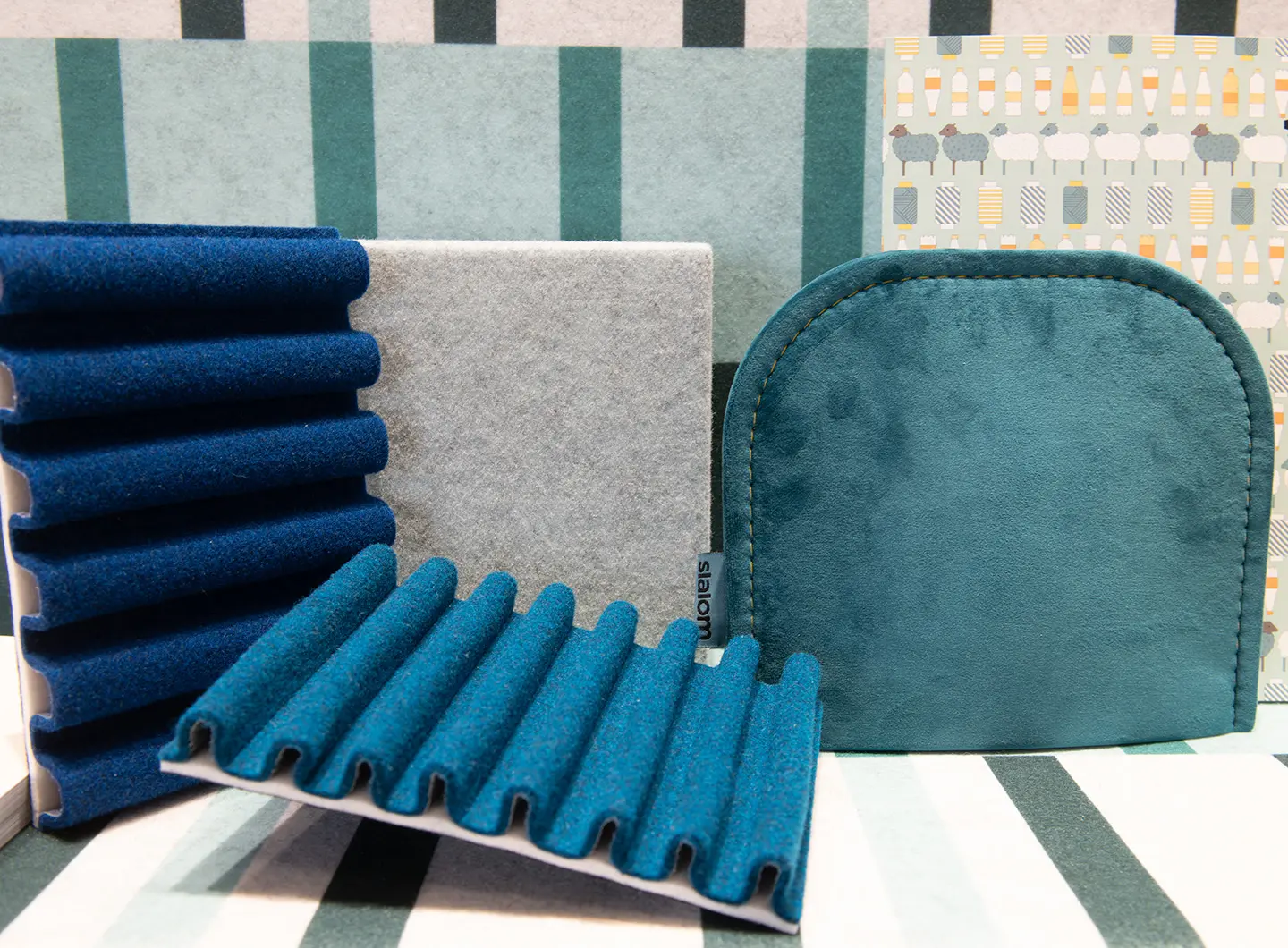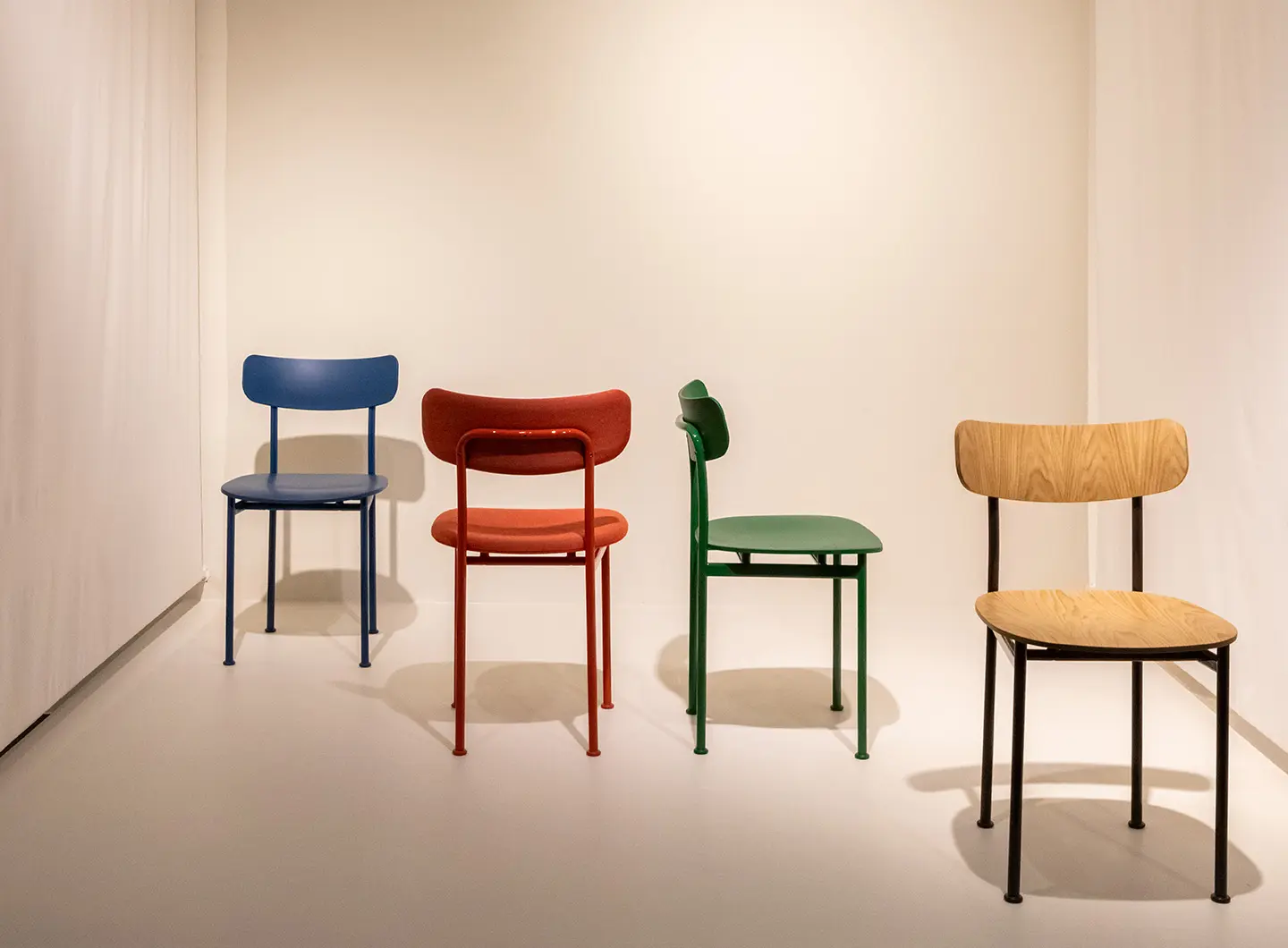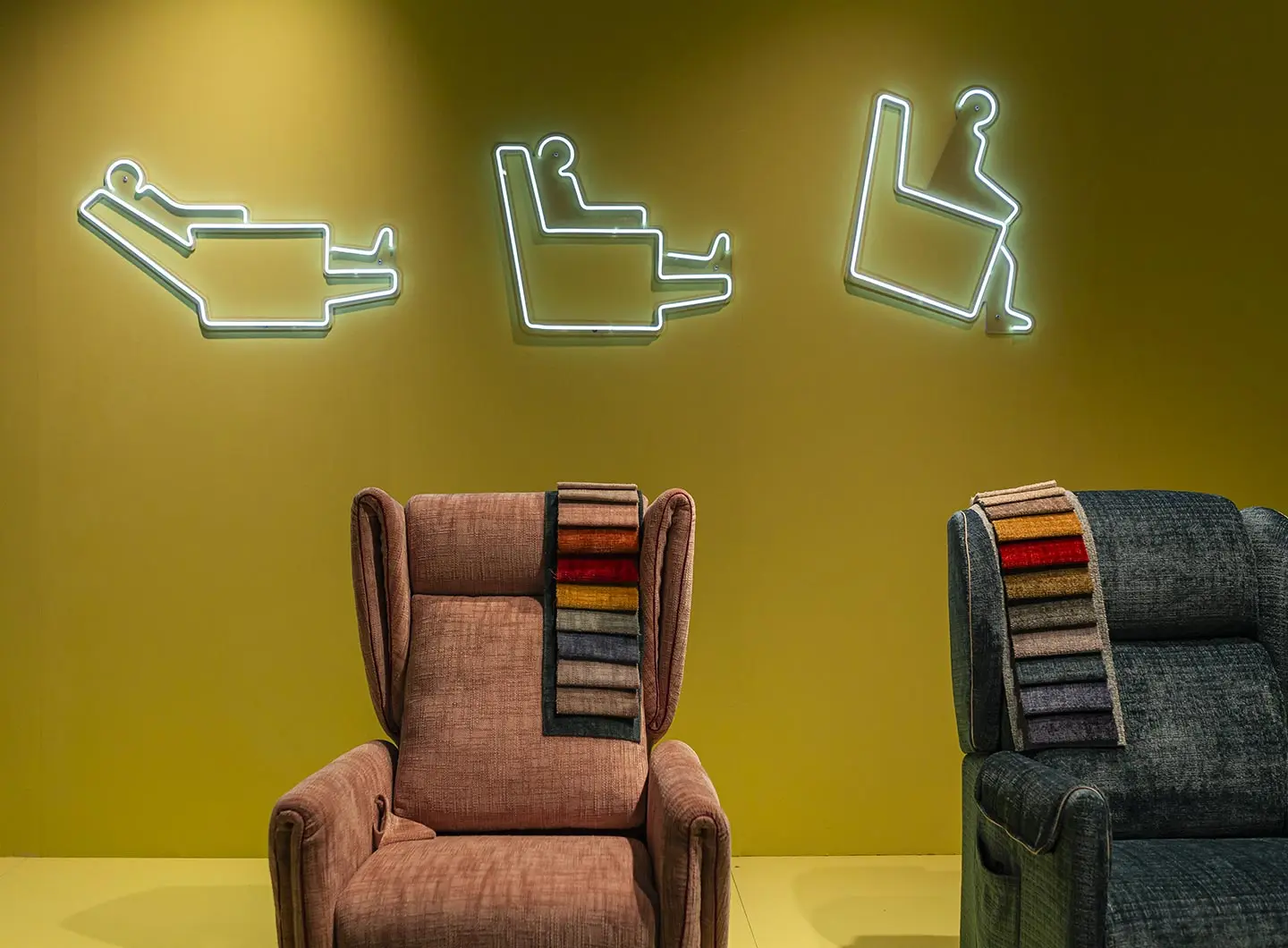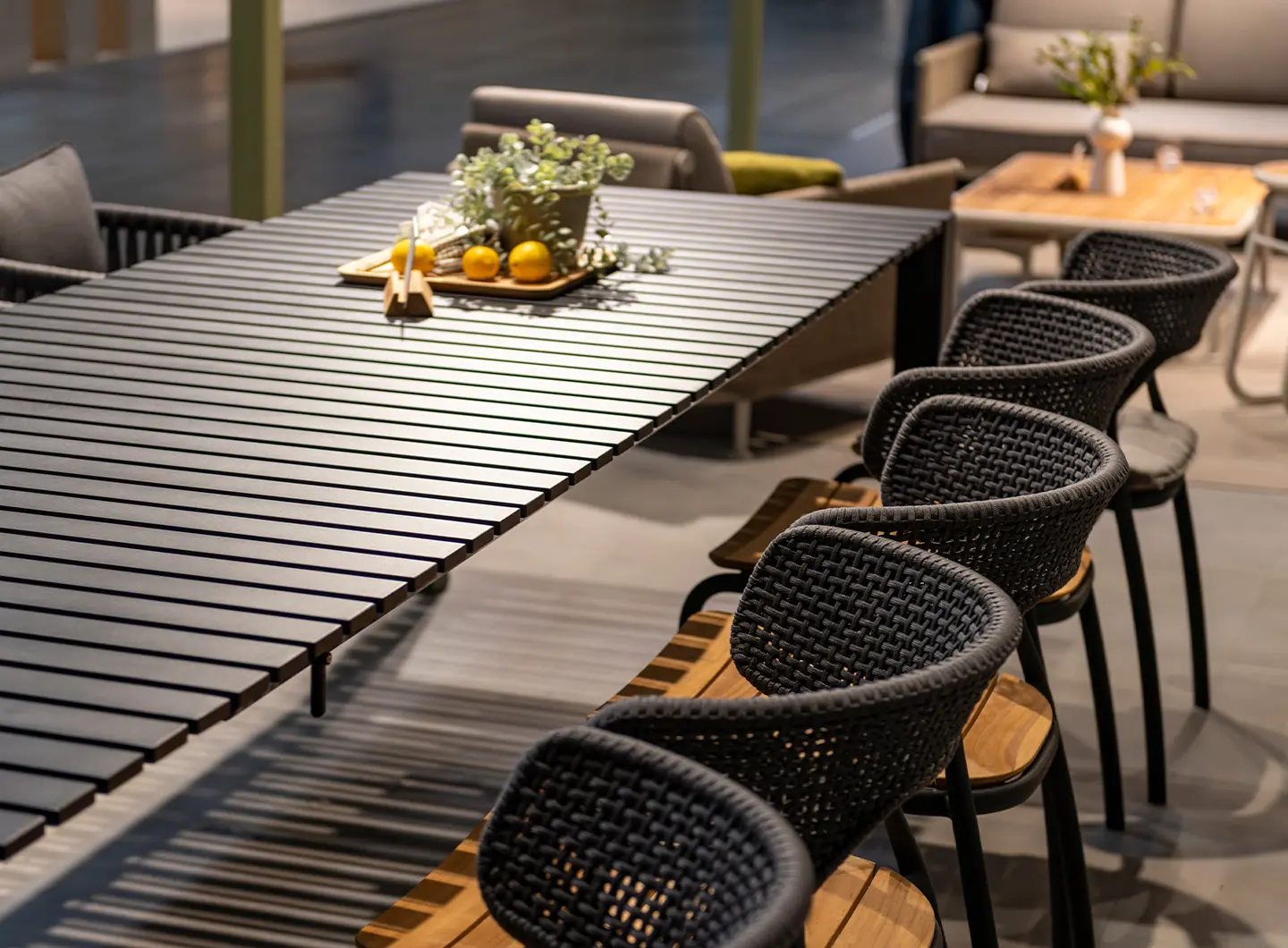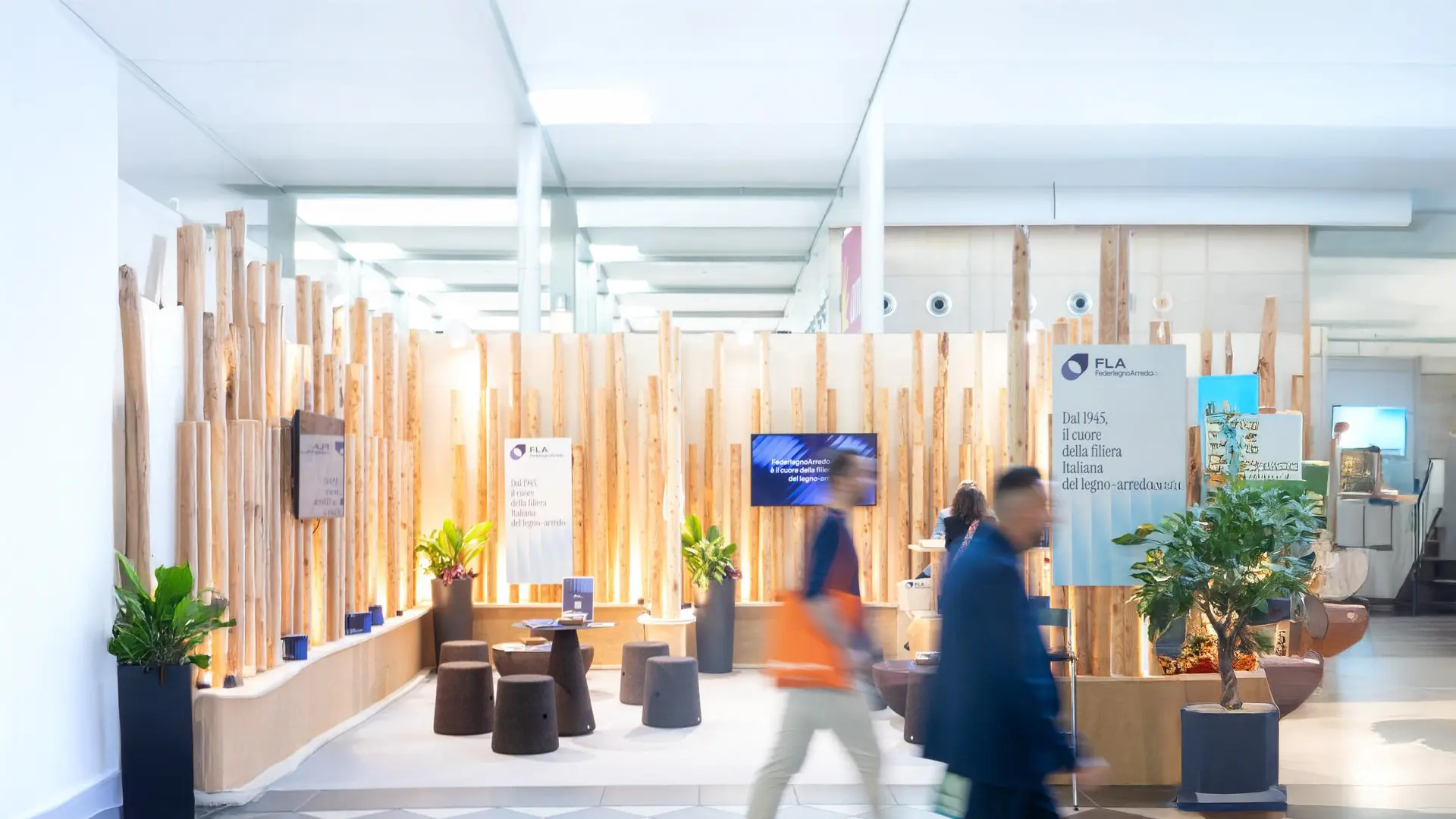For the third consecutive year, the Federation is taking part in the international fair on the circular economy. Helping to strengthen processes of value creation that are not just sustainable but also inclusive
Materials as a creative guide in contemporary design

Ganda Blasco - Ph. Saverio Lombardi Vallauri
An overview of the 2025 collection proposals: a journey to discover the most interesting materials that look to the future between sustainability, performance, and design
In the academic and professional context, Material Driven Design indicates a design process that starts from the material, an approach that is increasingly widespread today and becomes central in an era of expanded intelligence and advanced sustainability. This method subverts the traditional logic of design: it is no longer the concept that guides the selection of the material, but the material itself that constitutes the starting point, determines the concept and directs the whole creative flow. A Copernican revolution.
Designers, companies and researchers have begun to conceive materials no longer as simple production resources, but as active agents, capable of inspiring forms, functions, production processes and business strategies. Some production companies have even grown up around the development and valorization of a single material, taking it as the focus for all its planning, aesthetic and design decisions. The Salone del Mobile di Milano 2025 prominently highlighted this paradigm, presenting a series of products and collections that revolve precisely around the exploration of materials. Materials, increasingly sustainable, intelligent and performing, become the central narrative theme of the projects: they determine their form, intended use and symbolic value.
Materials between acoustic performance and beauty
One of the emerging themes is the integration between technical performance and aesthetic value, as demonstrated by the new proposals in the field of acoustics. Slalom presented a precise proposal consistent with its design philosophy, which blends ethics, aesthetics and functionality under the concept of “Acoustethics”. At the heart of its innovations is an increasingly close attention to sustainable materials and the sound-absorbing performance of its products, with solutions that improve the acoustic comfort of spaces, without sacrificing aesthetic impact and respect for the environment. One of the most interesting innovations is Woody, a panel that comes from the combination of FSC-certified wood and recycled PET, processed using a special patented thermoforming technology. The result is a light, solid and easily installed material, perfect for contract environments, offices or public spaces. Woody represents a virtuous example of upcycling, where the materials recovered are transformed into elements with a high aesthetic and functional value, capable of effectively absorbing sound waves. Another fascinating project is Bloom, a panel made from natural fibers and flower petals from sustainable farming. In addition to its visual impact and warm, tactile texture, Bloom also adds an olfactory dimension: thanks to controlled heat treatment, it preserves a natural fragrance, helping to create multisensory environments. This is a proposal designed not only for acoustics, but also for the emotional and perceptual well-being of spaces.
Sustainability and innovation in furnishing materials
The relationship between sustainability and materials was another central focus of the Salone. Several companies showed how design can be not just responsible, but also surprisingly innovative.
Caimi Brevetti once again confirmed its natural talent for research, cutting-edge design and concern for environmental sustainability. Outstanding among the most significant innovations of this year are those related to the use of recycled and recyclable materials, which embody technology, aesthetics and environmental responsibility. One of the most interesting proposals is Rerecycled, a stool designed by the studio AMDL Circle with Michele De Lucchi. The name in itself is a declaration of intent: the object is made out of over 50% recycled polyethylene and is completely recyclable in its turn. Printed in a single piece, it is designed to be durable, resistant and versatile. It can be used both as a seat and as a planter, indoors or outdoors. The design elegantly recalls the capitals of classic columns, but the real innovation lies in its minimal environmental impact.
Magis focused on the use of recycled and innovative materials, with a particular emphasis on Thomas Heatherwick’s In-Side collection already presented in 2024: sofas and armchairs in post-consumer and post-industrial recycled polyethylene, produced by roto-molding and featuring multicolored internal textures in flakes, unique to each piece. The Motta chair by Jasper Morrison also introduces versatility in materials, offering interchangeable seats in plastic, wood or padding. Finally, the All-Round table adopts lathe-turned sheet steel, processed with monochromatic finishes combining tactility and durability.
Gandia Blasco’s offering focused on the theme of sustainability through the use of recycled and natural materials. The Hos collection, designed by Kengo Kuma, uses regenerated PET and certified iroko wood to create outdoor furnishings inspired by nature. The new textile panels and carpets are made from recycled fibers, while the GBMODULAR system uses recyclable aluminum for flexible and low-impact configurations. Other projects, such as Botánica and Momos, enhance the value of felt and recycled PET, with close ties to craftsmanship and textile traditions.
Among the most interesting novelties from S-Cab is the SISI Vibes collection designed by Meneghello Paolelli, which repeats the iconic SISI shell but presents it in a new version in regenerated thermoplastic, a tough, lightweight material that underscores the brand’s commitment to eco-design. The result is a seat with understated lines, designed to last and capable of adapting to both indoors and out. Alongside this, the new Marisco rug designed by Maddalena Casadei is also outstanding, reinterpreting the Sardinian tradition of weaving while using polypropylene fibers suitable for outdoor use, retaining a strong craft value even in industrial production.
Egoitaliano presented new collections combining comfort, aesthetics and a strong commitment to sustainable and highly efficient materials. Its showpiece is the Astoria sofa, the heart of the Fratalia collection, with natural down-effect padding made out of material recycled from PET bottles, upholstered in Dubai technical velvet, proof against water, rubbing, and fully removable. The Zazou, Mavie and Tate models also focus on innovative and stain-resistant fabrics, eco-friendly padding and material details such as wood and leather inserts, offering transformable and modular solutions.
Mindo confirmed its commitment to a sustainable and durable outdoor range, with a focus on recyclable and durable materials. The new furnishings, such as the stackable seats and tables, are made from recyclable aluminum, light, rust-proof and ideal for contract use. The 122 Lounge collection combines Olefin fabrics – proof against rain, sun and staining – with compact foam and memory foam padding, designed to maintain comfort over time. All components are designed to be easily repairable, supporting a long life cycle and low environmental impact.
Surfaces and innovation: the material as the skin of the project
Surfaces have become star features, not only for their aesthetic qualities, but also for their effectiveness and their environmental impact.
Neolith presented the “Atmosphere: Breeze of Innovation” collection, consisting of four new surfaces — WhiteSands, Rapolano, Artisan and Ignea — inspired by nature and designed to offer a sensory experience. Made from new generation sintered stone, these offerings combine material aesthetics, high technical effectiveness and sustainability, thanks also to a composition with less than 9% crystalline silica.
Laminam presented “twO”, a new line of ceramic surfaces that represents a material evolution in the name of light and sustainability. The materials, the result of advanced research, are outstanding by their ability to interact with their environment thanks to sophisticated textures and finishes that reflect and modulate light. Made in large formats and with reduced thicknesses, these surfaces maintain high technical performance, while reducing the environmental impact through optimized production processes.
The Salone del Mobile 2025 confirms a trend that is now structural: materials are no longer a choice downstream of the project, but become the driver and meaning of design. Whether for acoustics, outdoors, surfaces or modular systems, the materials are increasingly conceived as a narrative, strategic and identitarian element. We are in a new culture of design that cuts across disciplines, sectors and generations. It is an invitation to rethink the role of the designer, who from being an author becomes an explorer, capable of interpreting the formal, functional and expressive potential of an entire vision in a material.


